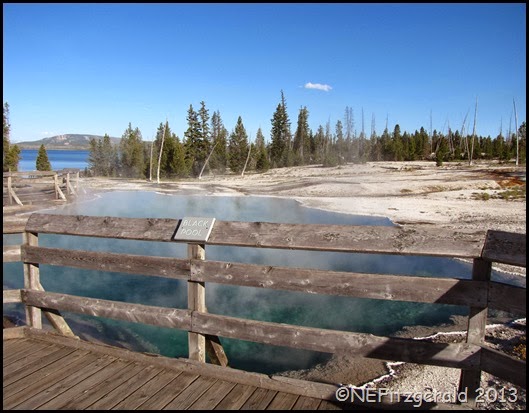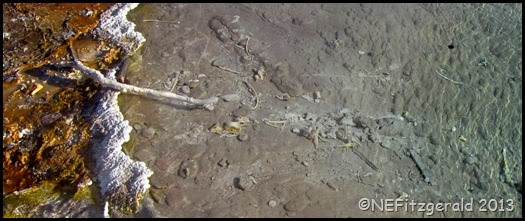We have come to post number seven in my series “Twelve months in thirteen days.” I have always wanted to do this – post a remembrance once each day at the end of the year, for each month of this year, remembering people, places, and rocks I have gotten to know better in 2013.
As a seasonal interpretive ranger in Yellowstone I get asked a lot of questions by visitors.
 |
| A female elk grazes in West Thumb Geyser Basin |
How deep is this pool?
How hot is the water in the geysers?
How do they know where to put the boardwalks?
 |
| This summer an elk calf was found after having fallen into the near-boiling waters of Black Pool |
There is one question, though, that I get asked more often than most others. And this past July visitors had the rare opportunity to see for themselves what the answer would be. It became a teachable moment for the rest of the summer.
Do animals ever fall into the hot springs?
Why, yes, they do, I would answer gently. Accidents do happen, and animals die. In an extreme environment such as a geyser basin there are no guarantees of anyone’s safety.
 |
| Most of the larger bones of the elk calf were carefully removed from the pool… |
 |
| …but some smaller bones remain to the right of the silica-encrusted branch. |
It is the nature of life and death in Yellowstone.







